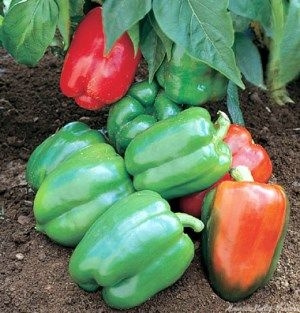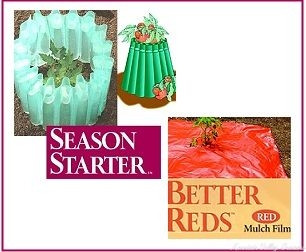Growing & using Cal Wonder Bell Pepper

Why do we only sell one bell pepper? After many years of selling different kinds of bell peppers, the hands down winner is California Wonder. It only makes sense because California Wonder Bell Peppers have been the gold standard for both commercial producers and home gardeners for over a hundred years. Now that’s some kind of longevity!
California Wonder Bell Peppers are big, blocky peppers that are most often eaten green but will mature to red if left on the plant. They have thick flesh and are ideal for stuffing, stir fry and just plain eating. Transplants need about two months to produce peppers. This variety is resistant to Tobacco Mosaic Virus.
Sweet Peppers most often come in a bell shape. They start out green and ripen to red. Green bell peppers that are common in the grocery are actually not quite ripe and they have a bit more of a bite to them. Colored bell peppers are fully ripened and tend to be sweeter. Bell Peppers can be eaten at any stage of development.
Since both Sweet and Hot Peppers originate in Central and South America it is no surprise that they prefer warm weather and warm soil to grow in. Pepper transplants should go into the garden in spring as soon as the night time temperatures are around 55 and there is no more danger of frost. A cold soggy soil will slow growth and possibly kill a pepper plant.

Soil should be well drained with plenty of organic matter. In cold spring areas, mulches can help warm up the ground and give the peppers a boost. Red Mulch has been shown to be very effective in increasing the yield of peppers, not only in the north, but throughout the United States. Plastic cones filled with water Season Starters also boost the temperature and with peppers every little bit counts.
Fertilize with an all purpose fertilizer at planting and, as the plant sets more flowers, add a vegetable fertilizer. Watering should be consistent and plentiful but soil should not become so wet that roots cannot get air. Space plants about every 18 to 24 inches in full sun. If flowers form on very small plants, they should be removed so the plants can make more leaves before setting fruit. The abundance of leaves helps the plant to make food and provides shade for the fruit when the sun is scorching hot.

